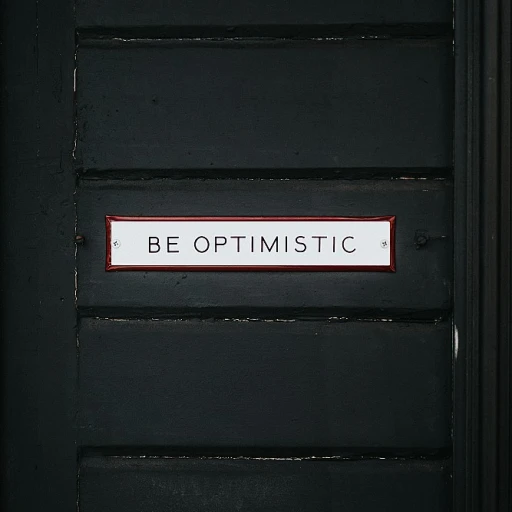
Understanding the Importance of DEI in Recruitment
The Role of DEI in Transforming Recruitment
In today’s competitive job market, the importance of Diversity, Equity, and Inclusion (DEI) in recruitment cannot be overstated. DEI initiatives are essential in creating a hiring process that attracts a wide array of diverse talent. These tactics not only promote equity and inclusion but also enhance the candidate experience and foster a vibrant company culture.
Organizations striving to secure top talent must recognize the benefits of a diverse workforce. An inclusive recruitment strategy not only facilitates the discovery of talents from various backgrounds but also strengthens the company’s employer brand. A unique mixture of perspectives and experiences among employees leads to increased creativity and better problem-solving abilities, which boosts organizational success.
Focusing on DEI during the recruitment process helps mitigate unconscious bias, ensuring the equitable hiring of candidates from underrepresented groups. As a result, the process yields a workforce that reflects the society we live in, driving organizational excellence and enhancing employee engagement.
For companies embarking on their DEI journey, integrating these principles into hiring practices is pivotal. Implementing strategies based on DEI can transform the recruitment process, creating a more fair and welcoming environment for all potential candidates. Building a diverse and inclusive culture is not only a moral imperative but also a strategic advantage that propels the organization forward in a rapidly evolving business landscape.
Identifying Gaps Through Employee Feedback
Recognizing the Critical Role of Employee Feedback in Enhancing DEI
To create a truly diverse and inclusive recruitment process, identifying the existing gaps is key. This begins with effectively gathering feedback from current employees, who can provide invaluable insights into the present culture and hiring environment within a company.
Employee feedback serves as a mirror reflecting the organization’s current state of diversity, equity, and inclusion (DEI). It pinpoints areas for improvement within the hiring practices and outlines strategies to cultivate a more equitable candidate experience. Without tapping into these experiences, companies might overlook unconscious biases ingrained in their systems, hindering the attraction and retention of diverse talent.
- Gaining direct input from employees about the existing company culture provides a deeper understanding of the employer brand.
- Feedback sheds light on the challenges faced by diverse candidates during the job application process.
- Insights from employees highlight discrepancies in job descriptions that might deter inclusive candidates.
- Employee perspectives help in designing DEI initiatives that are effective and resonate with all levels of the organization.
Furthermore, feedback can illuminate the less visible facets of company culture that impact candidate experience. Understanding such aspects enables tailored refinement of recruitment processes to ensure they foster inclusion and equity in a substantive way.
By continuously engaging employees in this evaluation, companies can course-correct potential oversight in their hiring strategies and recruitment practices, ultimately establishing a reputation for inclusive and equitable treatment. For a deeper understanding of how employee resource groups can reinforce these efforts, explore the detailed discussion on understanding the role of employee resource groups in tech companies.
Effective Feedback Collection Methods
Proven Techniques for Gathering Constructive Employee Feedback
In the quest to refine the DEI candidate experience, understanding how to effectively gather employee feedback is crucial. Collecting meaningful insights from your current workforce can unveil gaps in your recruitment process and help foster a more inclusive and equitable environment. Here’s how you can efficiently gather this invaluable information.- Surveys and Questionnaires: These tools remain one of the most effective methods for gathering feedback. Ensure questions are specifically tailored to address elements of diversity, equity, and inclusion within the recruitment process. Use anonymous surveys to encourage honest responses, minimizing the fear of repercussions.
- Focus Groups: Engaging employees in focus group discussions can yield deeper insights. Facilitate sessions with diverse groups within your organization, creating a safe space for candid dialogue about their experiences and observations. This method helps to tap into different perspectives that might not appear in written surveys.
- One-on-One Interviews: These personal interactions can provide nuanced feedback and allow for follow-up questions that delve deeper into specific concerns or suggestions. Choose a diverse set of employees to interview in order to gather a broad range of views.
- Utilizing Technology: Leverage platforms that offer real-time employee feedback features. This can help continuously monitor sentiments related to DEI initiatives and hiring practices, providing a steady stream of data to inform decisions.
- Engaging Social Media: An often overlooked resource, social media can provide insights into employee perceptions. Monitor platforms for discussions or comments about your company culture and hiring process.
Analyzing Feedback for Actionable Insights
Translating Data into Practical Solutions
Once you've gathered feedback, the next step is to analyze it strategically to reach actionable insights. This involves delving into the data to discern patterns and narratives about diversity, equity, and inclusion (DEI) within your hiring practices. The goal is to identify concrete areas for improvement in your inclusive recruitment process that can enhance the candidate experience and improve your company culture.
Identifying Key Patterns and Trends
- Diversity Reports: Examine diversity reports to understand how your current hiring strategies are resonating with diverse candidates. Are diverse talent pools being adequately reached through your recruitment channels?
- Sentiment Analysis: Evaluate feedback sentiments from candidates and employees regarding your company's DEI efforts. Are there prevalent themes or sentiments such as experiences of unconscious bias or equity inclusion issues?
- Benchmark Comparisons: Compare your DEI results against industry standards to gauge where your organization stands and how you can improve your DEI initiatives.
Transforming Insights into Strategy
Transforming feedback insights into actionable strategies involves setting clear, measurable goals based on the analysis. For instance, if job descriptions are identified as barriers for diverse candidates, consider revising them to speak more inclusively. If certain stages in the hiring process deter diverse applicants, you may need to adjust your hiring strategies or provide additional training to recruiters on cultural competency and equity inclusion principles.
Building a Collaborative Approach
Ensure that the insights gathered from your feedback are shared with relevant stakeholders across the organization. By fostering a culture of open communication and collaboration, your organization can address DEI challenges more effectively, leading to a more inclusive candidate experience and stronger talent acquisition outcomes.
Implementing Changes Based on Feedback
From Feedback to Action: Driving Meaningful Change
Once you've gathered feedback regarding the diversity, equity, and inclusion (DEI) aspects of your hiring process, implementing changes based on these insights is crucial. Transforming the data collected from employees into progressive action helps establish a more inclusive recruitment process, attracting top talent and bolstering the organization's employer brand.
To begin with, it's vital to evaluate the feedback comprehensively to identify specific areas requiring improvement. This could involve reviewing the language used in job descriptions, ensuring they foster a welcoming environment for diverse talent. Additionally, refining hiring strategies can mitigate unconscious bias, creating equitable opportunities for all candidates.
Equity and diversity inclusion strategies should be entrenched within the organization's culture. Start by revising existing hiring practices, making them more transparent and inclusive. This approach not only facilitates a better candidate experience but also propagates a culture of diversity throughout all levels of the company. Embedding these changes involves collaboration across departments, ensuring that all teams are aligned with the company’s DEI initiatives.
Training and development programs focusing on diversity equity and inclusion can further equip hiring managers with the necessary skills to conduct unbiased recruitment processes. Consistent reinforcement of these practices is essential to sustaining momentum and influencing company culture positively.
Lastly, leverage social media and other platforms to communicate your commitment to DEI. Highlight your efforts to potential candidates, illustrating how you’ve taken employee feedback on board to address diversity and create a more inclusive environment. By celebrating these changes, you not only reinforce your company as a leader in DEI but also attract diverse talent, enhancing overall employee engagement and retention.
Monitoring and Evaluating the Impact
Tracking the Outcomes of Your DEI Efforts
Once your organization has successfully implemented changes based on employee feedback regarding diversity, equity, and inclusion (DEI), it is crucial to assess the impact of these initiatives. This process involves monitoring and evaluating the effectiveness of your efforts to ensure continuous improvement in your hiring practices and company culture.
Here are some key steps to consider:
- Set Clear Objectives: Define clear goals and metrics to evaluate the impact of your DEI strategies. Consider the representation of diverse candidates in different stages of the recruitment process, the inclusivity of job descriptions, and the overall candidate experience.
- Engage Stakeholders: Maintain open communication with all stakeholders involved, including HR, hiring managers, and potential employees. Their insights can offer valuable perspectives on the effectiveness of your DEI initiatives and areas that may require further enhancement.
- Utilize Employee Feedback: Continuously collect and analyze feedback from existing employees and new hires. This will help gauge the ongoing influence of DEI efforts on the organization’s culture, as well as employee engagement and satisfaction.
- Regularly Review Policies: Reassess your hiring strategies and policies to address any unconscious bias and promote an inclusive talent acquisition process. This will help maintain a diverse workforce and foster a culture of inclusion and equity.
- Measure Progress: Track metrics such as employee turnover rates, employee engagement scores, and talent acquisition success in hiring diverse talent. These indicators can demonstrate the tangible effects of your DEI initiatives.
- Adjust as Needed: Be prepared to make necessary adjustments based on feedback and observed outcomes. A flexible approach ensures that the organization remains responsive to the changing needs of candidates and employees alike.
By diligently monitoring and evaluating your DEI efforts, your organization not only enhances its recruitment process but also strengthens its employer brand, making it a more attractive workplace for top talent.












